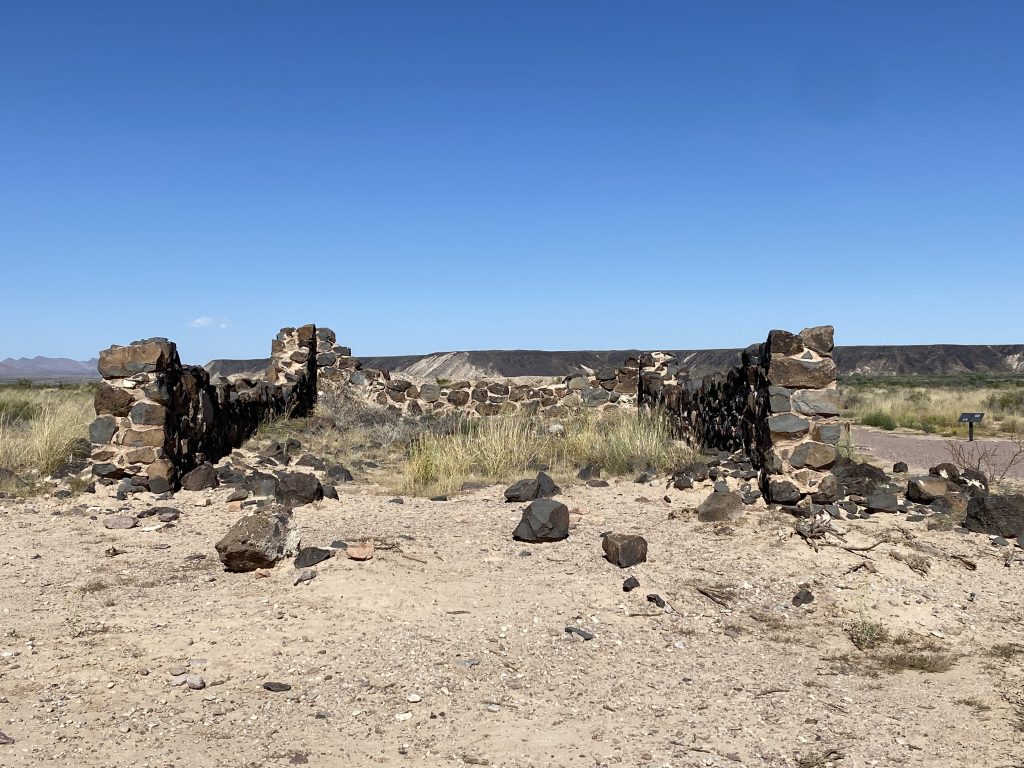ECW Weekender: Fort Craig
As secession fever swept the South in 1861, residents of the southern half of the New Mexico Territory – which was made up of modern day New Mexico and Arizona – declared that they were forming their own Arizona Territory and sought to join the nascent Confederacy. They were buoyed by Confederate troops, starting with a few hundred Texan cavalry under Col. John Baylor, followed in early 1862 by 3,000 more troopers under Brig. Gen. Henry Hopkins Sibley.
Without the benefit of modern infrastructure, Sibley was forced to stay close to the Rio Grande River for water as he invaded north through the desert – particularly the stretch known as the Jornada del Muerto, or Journey of Death. Blocking his route was the strategically-placed Fort Craig.
Originally built in 1854, Fort Craig was the rallying point for Union Col. Edward R.S. Canby’s army. Outnumbered, Sibley knew he couldn’t storm the fort, and didn’t have the supplies or heavy enough artillery for a siege. He swung east on a multi-day flanking march around the forth, and Canby sallied out to respond, sparking the Battle of Valverde on February 21, 1862.
The battle was a Confederate victory, but Canby was able to retreat safely into Fort Craig, and Sibley was once again faced with the same problems: outnumbered, too few supplies, and without the big guns for a siege. Sibley continued north toward Santa Fe, leaving Canby hunkered down in Fort Craig, blocking supplies and reinforcements for the Confederate army.
After Sibley’s invasion, Fort Craig continued to be an important Army outpost, particularly in campaigns against Native Americans in the region. It was abandoned in the 1880s, and went unprotected for a century, until it was acquired by the Bureau of Land Management, which still administers the site today.
Over that intervening century, the fort fell into disrepair. Most of the buildings collapsed, artifacts were looted or destroyed, and at one point was the center of a graverobbing scandal. Some of the remaining buildings were also damaged by a wildfire. It’s a grim reminder of the importance of preserving historic sites as early as possible.
Today, Fort Craig is well worth visiting if you’re in the area. You can tour the fort and get a feel for the harsh reality of life in a 19th century Army post in the remote desert. Many of the earthworks have held up fairly well, and the current site host, Jeff, is extremely knowledgeable and delightful to talk history with.

You’ll also get an incredibly clear view of the terrain around which this part of the campaign was fought. The elevation and vast expanses of desert allow you to take a vista across which armies marched and fought for days, in a way that isn’t possible at most Civil War sites.
Visiting Fort Craig is just about the closest you can get to the Valverde battlefield, which is mostly under private ownership.The one monument to the battle, put up by the Daughters of the Confederacy, is a few miles north of Fort Craig. If you like birding, the Bosque del Apache National Wildlife Refuge is also located a few miles north.
Fort Craig is tucked away off of a small exit off of I-25, between the towns of Socorro and Truth or Consequences. Be forewarned that it doesn’t have the amenities you may be used to around national parks. The nearest gas station is a lengthy drive away, you probably won’t have cell service, and you’ll be driving down some rough dirt roads to get to and from the fort.
The Visitors Center is open Thursday to Monday, from 8:00 AM to 4:30 PM.


Thanks for this thoughtful and concise narrative, as well as the helpful hints for visitors!